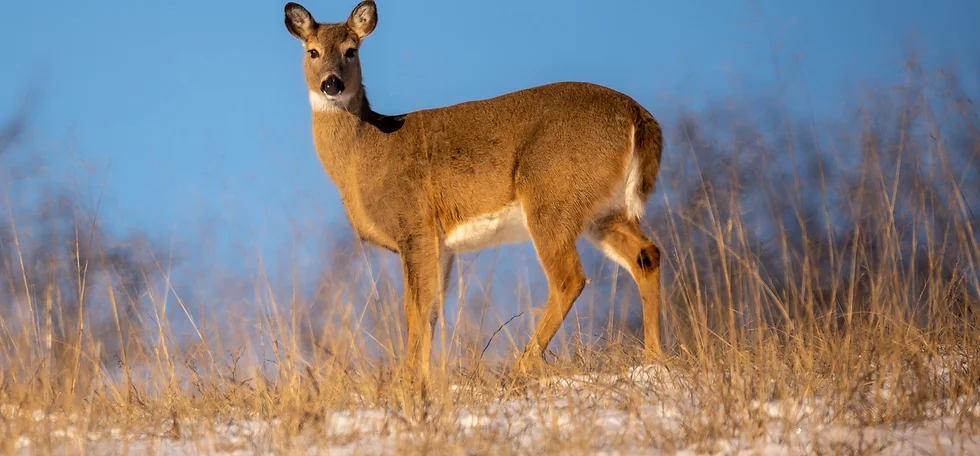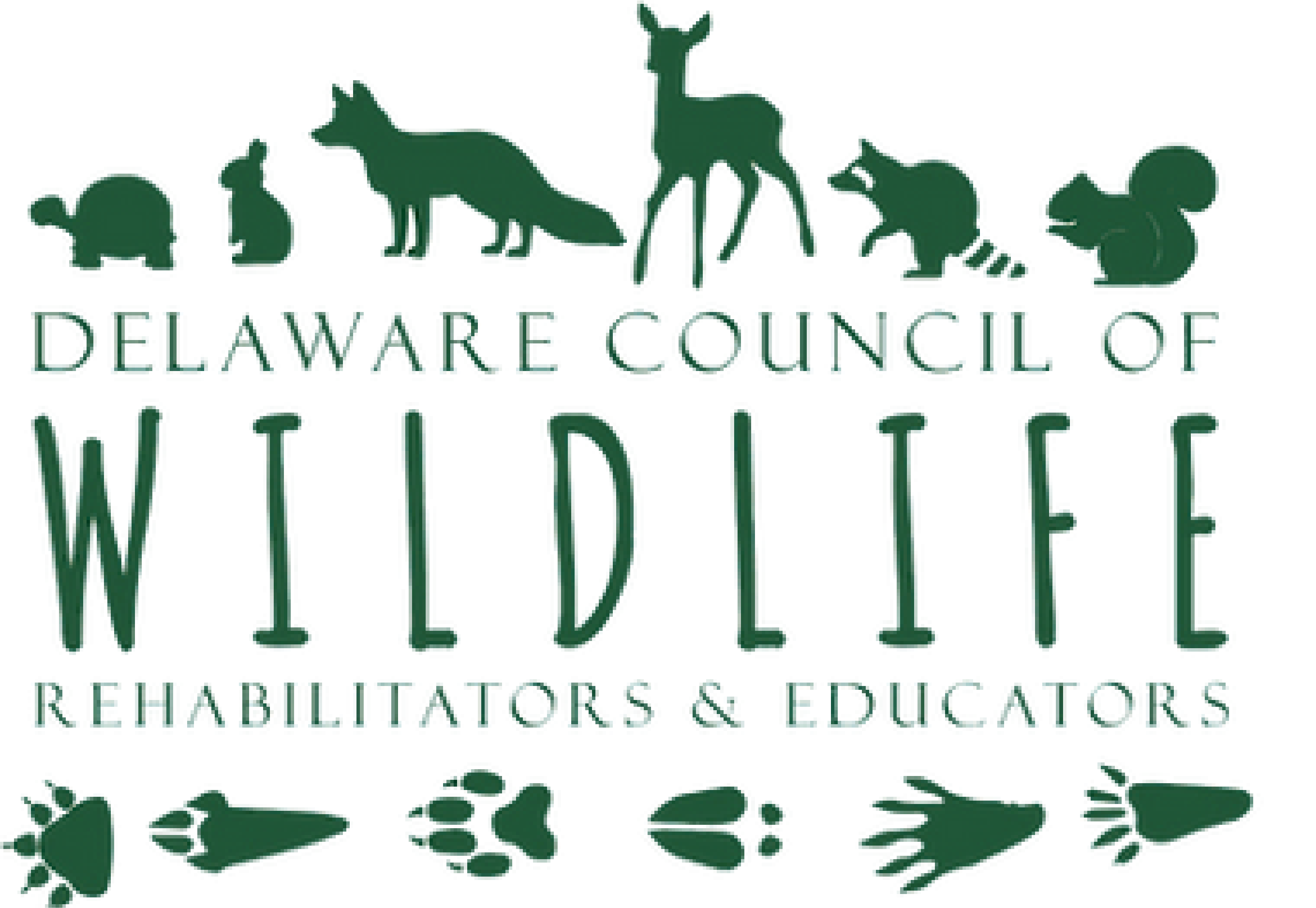
White Tailed Deer (Odocoileus virginianus)
Rehab Criteria: People often mistakenly assume that a fawn (baby deer) found alone is orphaned. If the fawn is lying down calmly and quietly, their mother is nearby and they are OK. A doe only visits and nurses their fawn a few times a day to avoid attracting predators. Unless you know that the mother is dead, leave the fawn alone.
Although mother deer are wary of human smells, they still want their babies back. If you already handled the fawn, quickly return the fawn to the exact spot where you found them and leave the area; the mother deer will not
show herself until you are gone.
If the fawn is lying on their side or wandering and crying incessantly all day, they probably need help.
When rescuing small wild animals, it’s a good idea to wear gloves. Be aware, however, that gloves provide only a small amount of protection, and that most mammals can easily bite through them. Raccoons, skunks, bats and some foxes are more likely than other mammals to carry rabies, but any wild animal may carry the disease. There are a number of other serious or fatal diseases that can be transmitted to humans, so you must take care that the animal doesn’t bite you.
**If you are concerned about the well-being of a fawn or injured deer, please contact DNREC as DCWRE does NOT have a
rehabilitator licensed for deer care.**
feet. They use their hooves to stomp and their snort to warn other deer of potential dangers. They are able to run up to 30 mph. They are nervous and shy and wave their tails from side to side when they are startled. They are extremely agile.
Lifespan: The average lifespan of a wild white-tailed deer is 4 ½ years.
Habitat: The white-tailed deer lives in wooded areas. In some areas, deer overpopulation is a problem.
Diet: the white-tailed deer is an herbivore. It feeds in the early morning hours and in the late afternoon. It eats green plants in the spring and summer and corn, acorns, and other nuts in the fall. In the winter, it eats the buds and twigs of woody plants.
Predators: Gray wolves and mountain lions used to be predators of the white-tailed deer and helped keep their population under control, but because of hunting and human development there are not very many wolves and mountain lions left in most regions of North America. Sometimes a bobcat or coyote will kill a young or sickly deer
Other Significant Threats: Humans and dogs are the largest threat to the deer population but disease and parasites can also weaken or kill them, especially in the winter.
Special Considerations/Interesting Facts: White-tailed deer were common in Delaware when European settlers first arrived. By the mid-1800s, though, hunting and habitat destruction had reduced the herd. The state banned deer harvest 1841. It remained illegal to harvest deer in Delaware until 1954, when the population had rebounded. Since then, the deer population has remained high.
